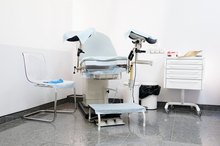What to Know Before You Try to Treat a Yeast Infection With Food
If you've ever experienced a yeast infection, you know just how painful and frustrating the entire process can be. And although it may feel uncomfortable or slightly embarrassing to consult a doctor about your symptoms, know they're actually pretty common.
If you are experiencing serious medical symptoms, seek emergency treatment immediately.
Three out of four women will experience a yeast infection at least once in their lives, according to the Office of Women's Health, and almost half experience more than one throughout their lives 14.
While you're no doubt eager to find relief fast, before you try a home remedy or turn to any foods for yeast infections, consult your doctor for safe and proper treatment.
Read more: These Vaginal Health Mistakes Might Increase Your Risk of Infection)
What Are Yeast Infections, and What Causes Them?
A common fungal infection, yeast infections can cause irritation, discharge or discomfort in and around the vagina. Other symptoms may include a burning sensation, redness, swelling or a rash.
Just like your gut, your vagina contains a healthy balance of yeast and bacteria. This bacteria works to keep the yeast from overgrowing. But when the balance gets thrown off, a yeast infection can occur. This may happen for several reasons including sexual intercourse, antibiotic use, pregnancy, uncontrolled diabetes or birth control use.
While there are some measures you can take to prevent a vaginal yeast infection from occurring in the first place, it's important to consult your doctor if you begin to experience symptoms, according to the Mayo Clinic 1. Wearing underwear with a cotton crotch may reduce your risk of yeast infections. Avoiding tight clothes, scented feminine products, unnecessary antibiotics and douching may also help prevent future infections.
Read more: Signs and Symptoms of Bacterial Infection
- A common fungal infection, yeast infections can cause irritation, discharge or discomfort in and around the vagina.
Treating a Yeast Infection
Baking Soda Paste for Lactobacillus Infections
Learn More
Considering this infection affects a pretty intimate part of the body, you may feel inclined to try some home remedies first. But before trying any DIY treatments, consult a doctor, as infections can be caused by different types of fungus, according to the Mayo Clinic. Your doctor may perform a pelvic exam or test the secretions in order to pinpoint exactly which fungus caused your infection and the best course of treatment.
Most often, your doctor will recommend an anti-fungal medication, which usually clears up the infection in under a week. Depending on the type of fungus and severity of infection, she may also prescribe an oral medication.
- Considering this infection affects a pretty intimate part of the body, you may feel inclined to try some home remedies first.
- Most often, your doctor will recommend an anti-fungal medication, which usually clears up the infection in under a week.
Foods for Yeast Infections
Currently, there's no evidence to show that eating certain foods — like garlic or yogurt — can help treat a yeast infection, according to the Mayo Clinic 1. While there are foods that you can integrate into your lifestyle to generally help fight inflammation — like tomatoes, olive oil, green leafy veggies and fatty fish, according to Harvard Health Publishing — eating these won't actually help treat an infection 2.
Cranberry juice is often rumored to help prevent yeast infections. While it may be useful in helping prevent urinary tract infections (UTIs), it has not been shown to help cure yeast infections, according to the University of Rochester Medical Center 3.
Related Articles
References
- Mayo Clinic: "Yeast infection (vaginal)"
- Harvard Health: "Foods that fight inflammation"
- University of Rochester Medical Center: "Cranberry"
- Office of Women's Health: "Vaginal Yeast Infections"
- InformedHealth.org [Internet]. Cologne, Germany: Institute for Quality and Efficiency in Health Care (IQWiG); 2006-. Vaginal yeast infection (thrush): Overview. 2019 Jun 19.Available from: https://www.ncbi.nlm.nih.gov/books/NBK543220/
- Jeanmonod R, Jeanmonod D. Vaginal Candidiasis (Vulvovaginal Candidiasis) [Updated 2020 Feb 4]. In: StatPearls [Internet]. Treasure Island (FL): StatPearls Publishing; 2020 Jan-. Available from: https://www.ncbi.nlm.nih.gov/books/NBK459317/
- InformedHealth.org [Internet]. Cologne, Germany: Institute for Quality and Efficiency in Health Care (IQWiG); 2006-. Oral thrush: Overview. 2012 Apr 26 [Updated 2019 Aug 15].Available from: https://www.ncbi.nlm.nih.gov/books/NBK367586/
- Aguin TJ, Sobel JD. Vulvovaginal candidiasis in pregnancy. Curr Infect Dis Rep. 2015 Jun;17(6):462. doi: 10.1007/s11908-015-0462-0.
- Chew SY, Than LT. Vulvovaginal candidosis: contemporary challenges and the future of prophylactic and therapeutic approaches. Mycoses. 2016 May;59(5):262-73. doi: 10.1111/myc.12455.
- Planned Parenthood. What is a yeast infection?
- InformedHealth.org [Internet]. Cologne, Germany: Institute for Quality and Efficiency in Health Care (IQWiG); 2006-. Vaginal yeast infection (thrush): Overview. 2019 Jun 19.
- Singh A, Verma R, Murari A, Agrawal A. Oral candidiasis: An overview. J Oral Maxillofac Pathol. 2014;18(Suppl 1):S81–S85. doi:10.4103/0973-029X.141325
- Jeanmonod R, Jeanmonod D. Vaginal Candidiasis (Vulvovaginal Candidiasis) [Updated 2020 Feb 4]. In: StatPearls [Internet]. Treasure Island (FL): StatPearls Publishing; 2020 Jan-.
- InformedHealth.org [Internet]. Cologne, Germany: Institute for Quality and Efficiency in Health Care (IQWiG); 2006-. Oral thrush: Overview. 2012 Apr 26 [Updated 2019 Aug 15].
- Blostein F, Levin-sparenberg E, Wagner J, Foxman B. Recurrent vulvovaginal candidiasis. Ann Epidemiol. 2017;27(9):575-582.e3. doi:10.1016/j.annepidem.2017.08.010
- Aguin TJ, Sobel JD. Vulvovaginal candidiasis in pregnancy. Curr Infect Dis Rep. 2015;17(6):462. doi:10.1007/s11908-015-0462-0
- Rajalakshmi R, Kalaivani S. Prevalence of asymptomatic infections in sexually transmitted diseases attendees diagnosed with bacterial vaginosis, vaginal candidiasis, and trichomoniasis. Indian J Sex Transm Dis AIDS. 2016;37(2):139–142. doi:10.4103/0253-7184.192121
- Ringdahl EN. Treatment of recurrent vulvovaginal candidiasis. Am Fam Physician. 2000;61(11):3306-12, 3317.
- Aguin TJ, Sobel JD. Vulvovaginal candidiasis in pregnancy. Curr Infect Dis Rep. 2015 Jun;17(6):462. doi: 10.1007/s11908-015-0462-0.
- Blostein F, Levin-Sparenberg E, Wagner J, Foxman B. Recurrent vulvovaginal candidiasis. Ann Epidemiol. 2017 Sep;27(9):575-582.e3. doi: 10.1016/j.annepidem.2017.08.010.
- Chew SY, Than LT. Vulvovaginal candidosis: contemporary challenges and the future of prophylactic and therapeutic approaches. Mycoses. 2016 May;59(5):262-73. doi: 10.1111/myc.12455.
- Roberts CL, Algert CS, Rickard KL, Morris JM. Treatment of vaginal candidiasis for the prevention of preterm birth: a systematic review and meta-analysis. Syst Rev. 2015 Mar 21;4:31. doi: 10.1186/s13643-015-0018-2.
- Xie HY, Feng D, Wei DM, Mei L, Chen H, Wang X, Fang F. Probiotics for vulvovaginal candidiasis in non-pregnant women. Cochrane Database Syst Rev. 2017 Nov 23;11:CD010496. doi: 10.1002/14651858.CD010496.pub2.









